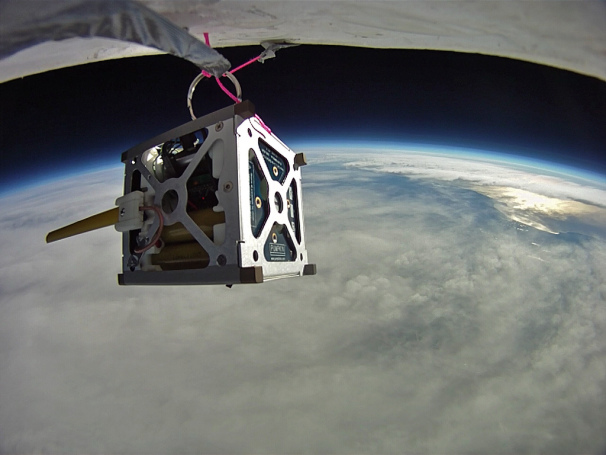Android smartphones will control NASA satellites
The Android ecosystem is rapidly developing beyond smartphones and tablets - last week we saw the Nikon camera on Android , and Panasonic, for example, uses Android and NFC applications to control smart home appliances. But NASA went the furthest and plans to bring the operating system out of our planet - the new space agency program called PhoneSat plans to use Android to control miniature satellites.

PhoneSat 1.0 on a high-altitude balloon
As part of the program, researchers from the Ames Research Center are exploring the possibility of creating small (these are cubes 10x10x10 cm) cheap (each costs only about $ 3,500) satellites from the available components, in particular, they will be controlled using Nexus smartphones. Kilogram satellites will be reusable and with their help it will be possible to build a cheap but powerful observation network.
')
Two models have already been created - PhoneSat 1.0 and PhoneSat 2.0. Model 1.0 works on the Nexus One, and 2.0 has already been upgraded to the Nexus S, in addition, the older model will have solar panels and a primitive orientation system. The launch into orbit is planned for this year, two satellites 1.0 and one 2.0 will be launched into space. The purpose of the first launch is to understand how smartphones will work in space conditions.
NASA's plans for Android are big enough - they are planning to use green robots in the lunar mission and, as mentioned above, to deploy a cheap Earth observation system.

PhoneSat 1.0 on a high-altitude balloon
As part of the program, researchers from the Ames Research Center are exploring the possibility of creating small (these are cubes 10x10x10 cm) cheap (each costs only about $ 3,500) satellites from the available components, in particular, they will be controlled using Nexus smartphones. Kilogram satellites will be reusable and with their help it will be possible to build a cheap but powerful observation network.
')
Two models have already been created - PhoneSat 1.0 and PhoneSat 2.0. Model 1.0 works on the Nexus One, and 2.0 has already been upgraded to the Nexus S, in addition, the older model will have solar panels and a primitive orientation system. The launch into orbit is planned for this year, two satellites 1.0 and one 2.0 will be launched into space. The purpose of the first launch is to understand how smartphones will work in space conditions.
NASA's plans for Android are big enough - they are planning to use green robots in the lunar mission and, as mentioned above, to deploy a cheap Earth observation system.
Source: https://habr.com/ru/post/150292/
All Articles